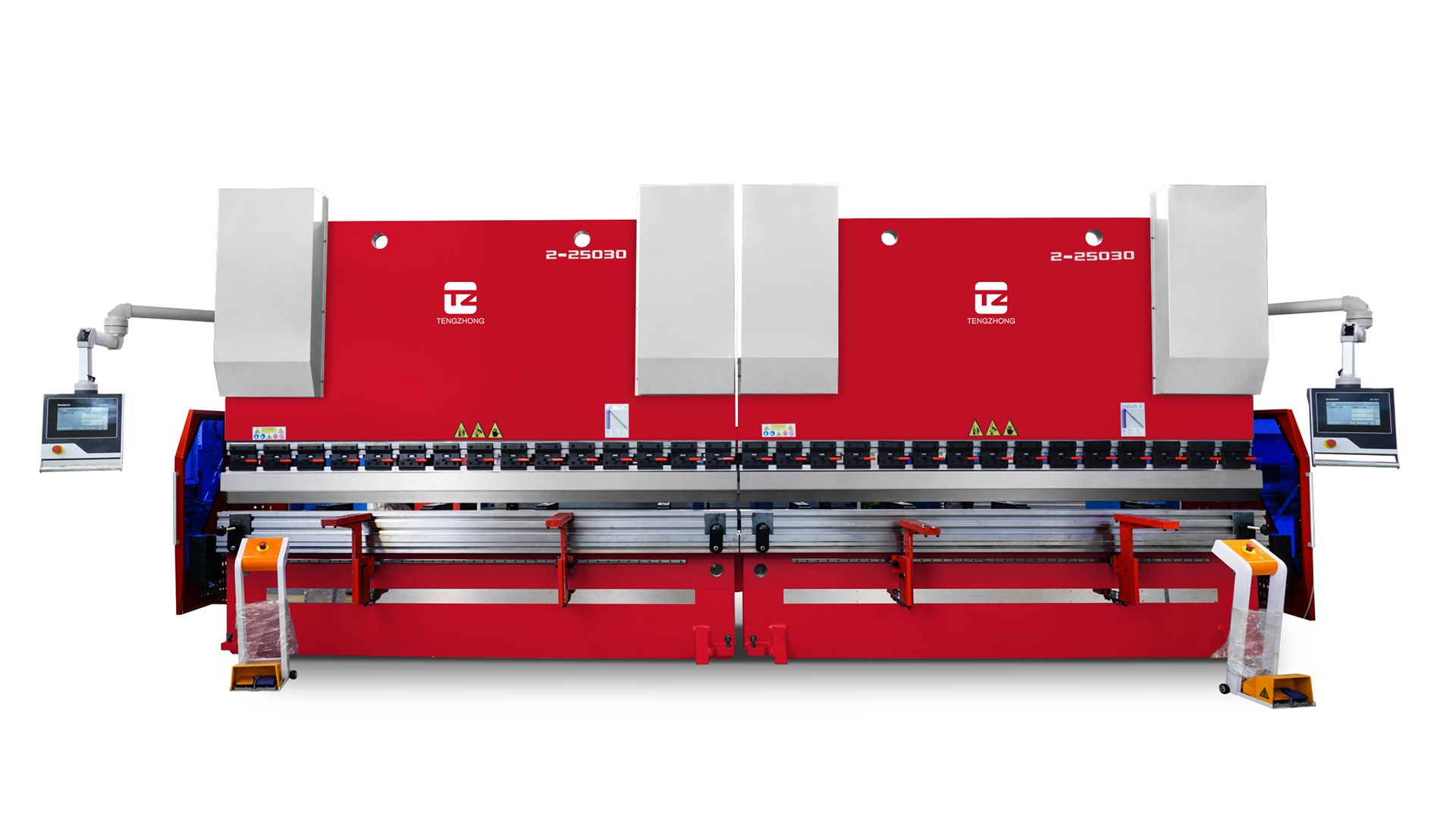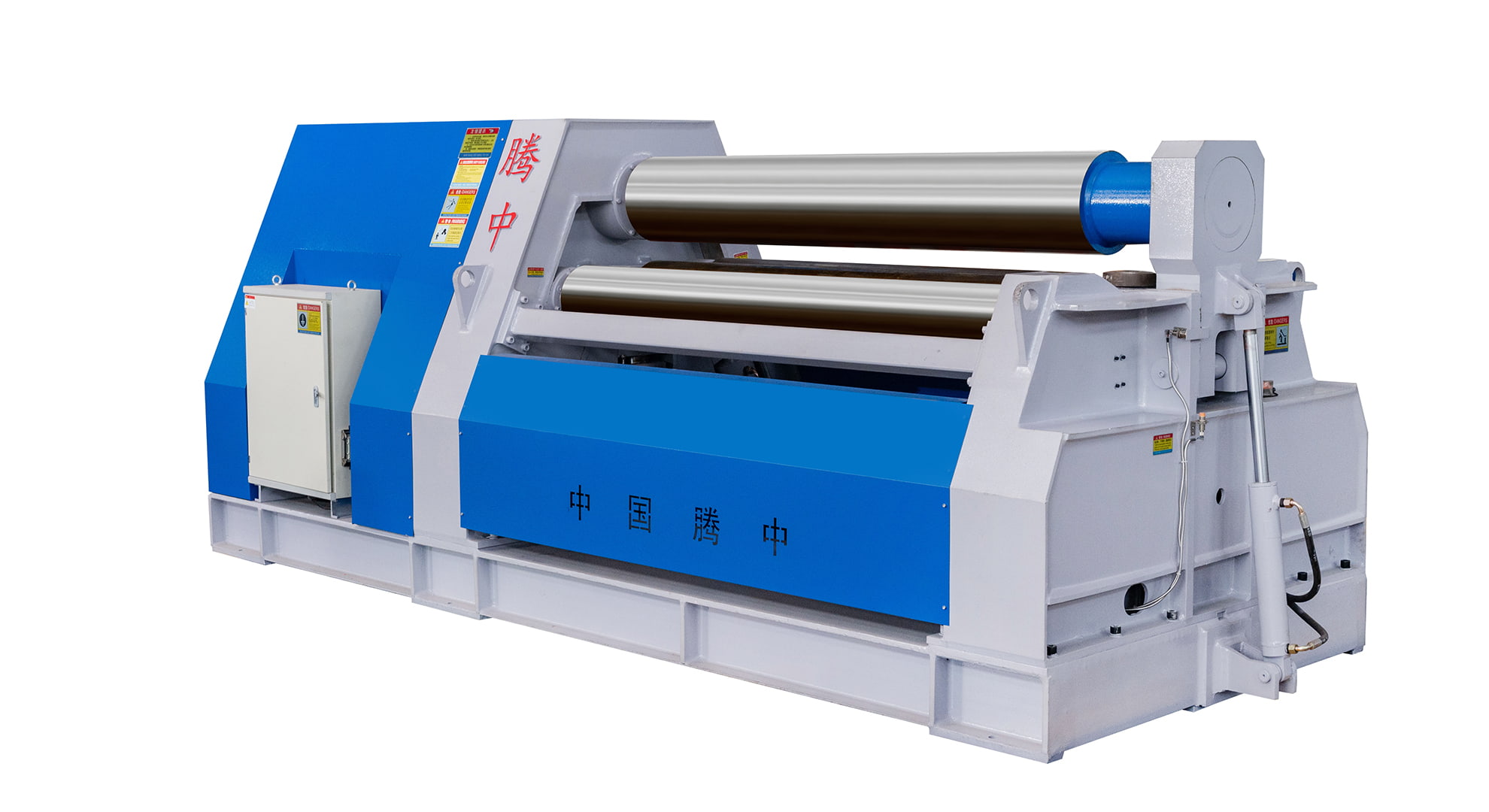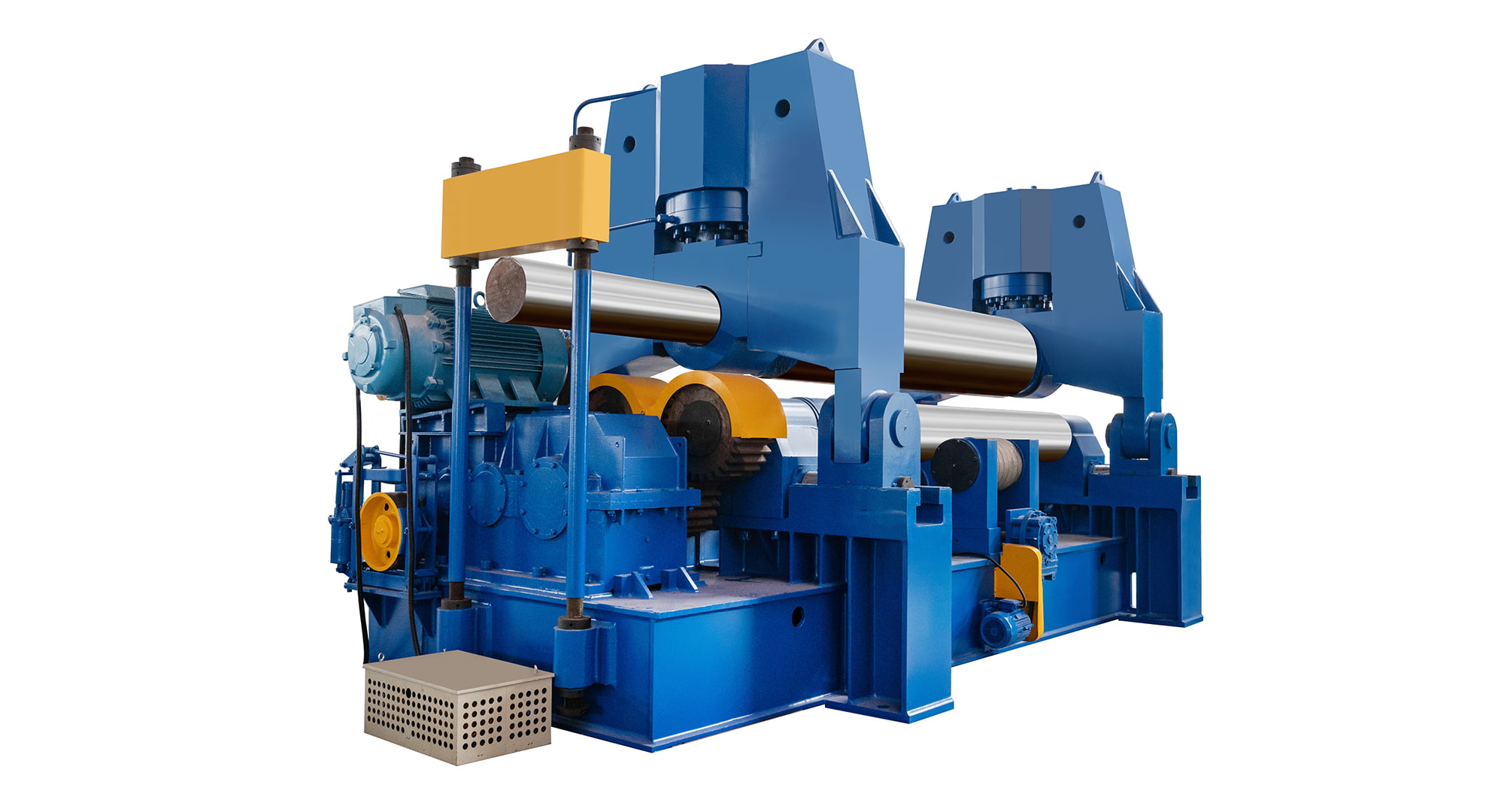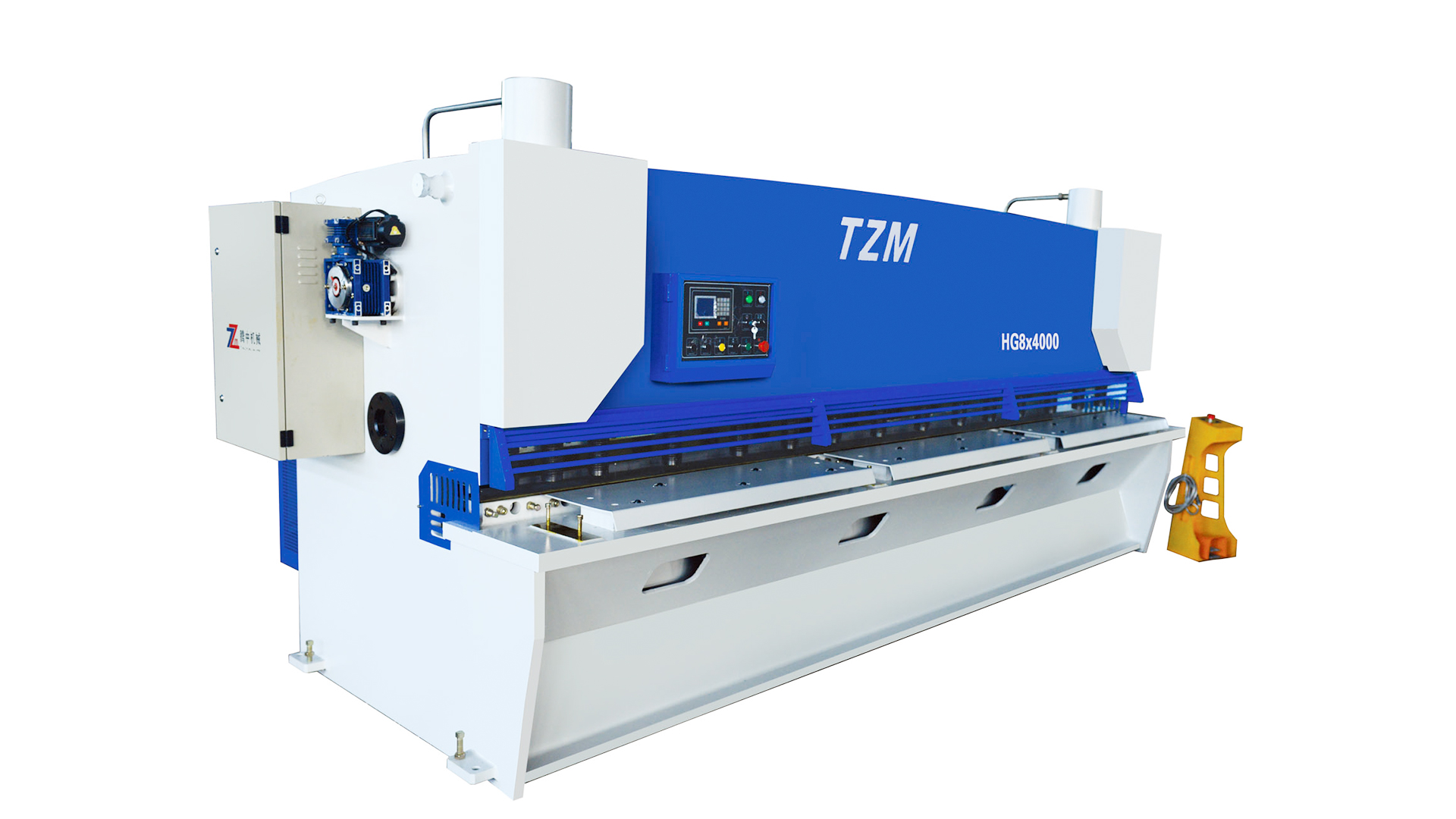4 Roller Rolling Machine: A Comprehensive Introduction
2025-10-31
A 4 roll rolling machine, also known as a four - roll plate bending machine, is a specialized industrial tool designed to bend or roll metal plates into various shapes, primarily cylindrical or conical forms. It operates on the fundamental principles of material deformation and mechanical manipulation, making it an indispensable asset in numerous manufacturing and fabrication processes.
Structure
The four - roll rolling machine is mainly composed of the following key parts:
Hydraulic Positioning Cylinder: Responsible for precisely controlling the movement and positioning of certain components, ensuring accurate adjustments during the rolling process.
Control Panel: Serves as the operator interface, allowing for the input of parameters such as plate thickness, width, and desired bending radius. It also monitors and controls the overall operation of the machine.
Top Roll: In most cases, the upper roll is the main drive roll. It provides the primary force to drive the metal plate through the machine. In some models, it remains fixed in position, while in others, it can be adjusted vertically or horizontally for more complex bending operations.
Side Rolls: These are the two smaller rolls located on either side of the machine. They play a crucial role in applying lateral pressure to the plate, enabling the creation of curved shapes. The side rolls can be adjusted in height and position to control the curvature of the rolled plate.
Bottom Roll: The two larger bottom rolls support the weight of the metal plate and work in tandem with the top roll to drive the plate through the machine. They also contribute to the initial alignment of the plate before the bending process begins.
Machine Frame: The sturdy frame provides structural support for all the components of the four - roll rolling machine. It is typically made of high - strength steel to withstand the forces generated during the rolling process.
Working Principle
Preparation: Before starting the rolling process, the machine operator must ensure that the metal plate is clean, free from any debris or contaminants that could affect the quality of the bend. The plate is then properly aligned and positioned between the bottom and top rolls. The operator also sets the machine parameters, such as plate thickness, width, and the desired bending radius, according to the specifications of the final product.
Initial Positioning: The bottom rolls of the machine are adjusted to support the plate's weight evenly. This initial support is crucial for ensuring that the plate moves smoothly through the machine during the rolling process. The top rolls are raised to their uppermost position, creating a large enough gap to allow the easy insertion of the metal plate.
Insertion: The metal plate is carefully inserted between the bottom and top rolls through the machine's entry gap. The operator must take great care to ensure that the plate is centered and perfectly aligned with the rolls. Any misalignment at this stage can result in uneven bending or defects in the final product.
Adjustment: Once the plate is in position, the operator adjusts the positions of the bottom and top rolls to match the desired bending radius and curvature. This adjustment is a critical step in achieving the correct bend radius without causing excessive strain or deformation on the plate. Precise adjustments are often made using the control panel, which allows for fine - tuning of the roll positions.
Bending: With the rolls properly adjusted, the machine's hydraulic or mechanical systems are engaged. The bottom rolls begin to rotate, driving the plate forward. Simultaneously, the top rolls apply downward pressure on the plate. As the plate moves through the rolls, it undergoes plastic deformation, gradually bending around the bottom rolls to take on the desired curved shape.
Progressive Bending: In many cases, the bending process is not completed in a single pass. As the plate continues to move through the rolls, the operator may need to make further adjustments to the top and bottom rolls' positions to achieve the exact curvature and shape required. This progressive bending approach, often involving multiple passes, helps to ensure precision and minimize stress on the plate, resulting in a higher - quality final product.
Exit and Removal: Once the plate has passed through all the rolls and achieved the desired shape, it exits the machine at the other end. The operator carefully removes the bent plate from the machine, and the rolling process is complete. The removed plate is then ready for further processing or assembly, depending on the specific manufacturing requirements.
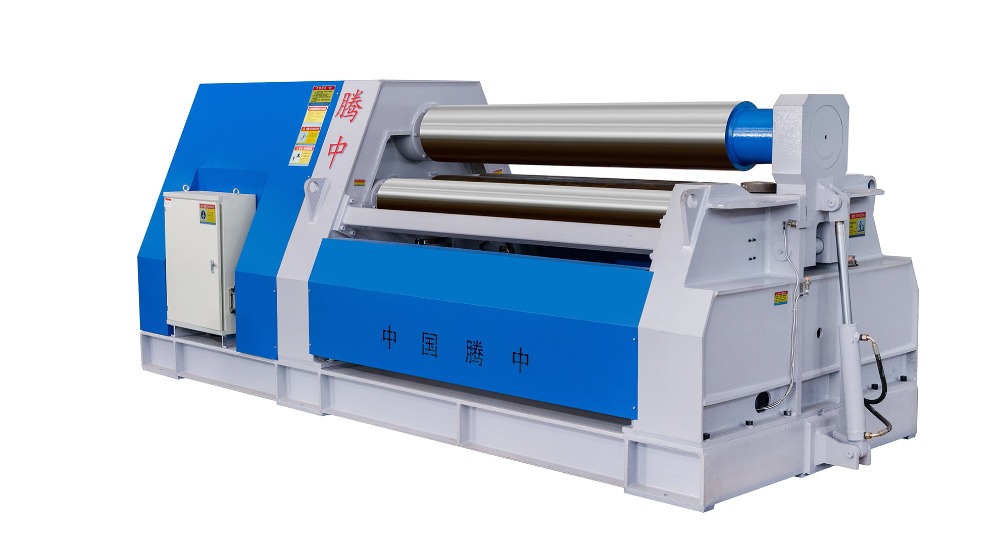
Operating Procedures
Machine Setup: Before using the four - roll rolling machine, it is essential to ensure that the machine is properly assembled and calibrated. This includes checking the hydraulic or mechanical systems for any leaks, malfunctions, or signs of wear. Safety mechanisms, such as emergency stop buttons and guards, should also be inspected to ensure they are in working order. Additionally, the roll alignments must be verified to guarantee accurate bending results.
Plate Preparation: The metal plate to be rolled must be thoroughly cleaned to remove any dirt, rust, or other contaminants. It should also be checked for proper sizing and any potential defects. The plate is then positioned correctly for bending, taking into account the desired orientation and alignment with the machine's rolls.
Roll Adjustment: Based on the desired bend radius and curvature, the operator adjusts the positions of the bottom and top rolls. This adjustment may involve using manual controls or relying on the machine's computer - controlled system. The operator should consult the machine's manual or guidelines for specific adjustment procedures, as different models may have slightly different adjustment mechanisms.
Plate Insertion: The plate is carefully inserted into the machine's entry gap, ensuring that it is centered and aligned as described in the working principle section. Any misalignment at this stage can lead to uneven bending or other quality issues.
Bending Process: The hydraulic or mechanical systems of the machine are activated to start the bending process. The operator closely monitors the progress of the bending, observing the plate as it moves through the rolls. During this process, adjustments to the roll positions may be necessary to achieve the desired bend.
Progressive Bending: If multiple passes are required to achieve the desired shape, the operator performs these passes, adjusting the rolls' positions between each pass. This step - by - step approach allows for a more controlled and accurate bending process.
Exit and Removal: After the plate has been bent to the desired shape, it is allowed to exit the machine. The operator carefully removes the bent plate and inspects it for any signs of defects, such as uneven bends, cracks, or other imperfections. If necessary, the plate may be subjected to further processing or re - rolled to correct any issues.
Machine Maintenance: After the bending process is complete, routine maintenance on the machine is essential. This includes cleaning the machine to remove any metal shavings or debris that may have accumulated during the rolling process. Moving parts, such as the rolls and hydraulic cylinders, should be lubricated to reduce friction and wear. Any signs of wear or damage, such as worn - out bearings or leaking hydraulic hoses, should be addressed promptly to ensure the continued proper functioning of the machine.
Advantages
Reduced Pre - rolling: In a four - roll rolling machine, the material is pinched between the two central rolls, which significantly reduces the need for extensive pre - rolling. This not only saves time but also improves the overall efficiency of the rolling process.
Single - Pass Working: Many four - roll rolling machines are capable of performing multiple operations, including squaring, pre - rolling, rolling, and closing pre - rolling, all in a single pass. This streamlined process simplifies the manufacturing workflow and increases productivity.
Horizontal Plate Feeding: Thanks to the support of the lower roll and the side roll, the plate can be fed into the machine horizontally. This horizontal feeding method is more convenient and stable, especially for larger and heavier plates.
Plate Squaring: The position of the side roll allows for easy squaring of the plate. This ensures that the plate is properly aligned before the rolling process begins, resulting in more accurate and consistent bending results.
Reduced Machine Space Requirement: Since squaring and rolling can often be done in a single step, the space required around the machine is reduced. This is particularly beneficial in manufacturing facilities where space may be limited.
High Precision and Roundness: Four - roll rolling machines, especially those with advanced control systems, can achieve high levels of precision and roundness in the rolled products. This makes them ideal for applications where tight tolerances are required, such as in the aerospace and automotive industries.
Versatility: These machines can handle a wide range of plate thicknesses, widths, and materials, making them highly versatile. They can be used to roll various shapes, including cylinders, cones, and arcs, to meet the diverse needs of different manufacturing processes.
Automatic Features: Some modern four - roll rolling machines are equipped with automatic alignment and clamping functions. These features ensure that the plate remains in place during the rolling process, preventing it from sliding or running off, which further improves the quality of the finished product.
Safety Features: Many four - roll rolling machines are designed with safety features such as anti - overload and hydraulic protection functions. These features help to protect the machine from damage due to excessive loads and also safeguard the operator from potential accidents.
Small Reel Diameter: Four - roll bending machines are capable of rolling cylinders with relatively small diameters. In some cases, they can roll cylinders that are less than 1.1 times the diameter of the upper roller, which provides greater flexibility in manufacturing small - diameter components.
Applications
The four - roll rolling machine finds extensive applications in a wide range of industries:
Pressure Vessel Manufacturing: In the production of pressure vessels, such as boilers and storage tanks, four - roll rolling machines are used to form the cylindrical and conical sections of the vessels. The high precision and ability to handle thick plates make them well - suited for this critical application.
Steel Structure Fabrication: For fabricating steel structures, such as those used in buildings, bridges, and industrial facilities, four - roll rolling machines are used to bend and shape steel plates into various components. The versatility of these machines allows for the creation of complex shapes required in modern steel structures.
Automotive Industry: In the automotive sector, four - roll rolling machines are used to manufacture parts such as exhaust pipes, fuel tanks, and body panels. The ability to achieve high precision and consistent quality is crucial in automotive manufacturing.
Aerospace and Aviation: The aerospace and aviation industries require components with extremely tight tolerances. Four - roll rolling machines are used to produce parts such as aircraft fuselage sections, engine components, and wing structures. The high - precision capabilities of these machines are essential for meeting the stringent quality requirements of the aerospace industry.
Rail Transportation: In the manufacturing of trains and subway cars, four - roll rolling machines are used to form the body shells and other structural components. The ability to handle large - scale production and maintain high quality is important in this industry.
Elevator Manufacturing: For the production of elevator cars and shafts, four - roll rolling machines are used to bend and shape the metal plates. The precise bending capabilities ensure a proper fit and smooth operation of the elevator components.
Bridge Engineering: In bridge construction, four - roll rolling machines are used to fabricate the curved and tapered components of the bridge structure. The ability to work with large - size plates and achieve accurate bends is vital for ensuring the structural integrity of the bridge.
Stadium and Architectural Design: In the construction of stadiums and other unique architectural structures, four - roll rolling machines are used to create the curved and shaped metal elements that give these buildings their distinctive 外观. The versatility of the machines allows architects to realize their creative designs.
General Manufacturing: Four - roll rolling machines are also widely used in general manufacturing processes, such as the production of metal furniture, industrial equipment, and agricultural machinery. They can be used to create a variety of curved and shaped components for these products.
In conclusion, the 4 - roll rolling machine is a highly versatile and efficient industrial tool that plays a crucial role in numerous manufacturing and fabrication processes. Its unique structure, working principle, and advantages make it an essential asset in industries where precision, efficiency, and versatility are required.

 English
English русский
русский Français
Français Español
Español Português
Português عربى
عربى



